Showing Spotlights 537 - 544 of 2783 in category All (newest first):
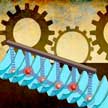 The precise mechanisms underlying friction at the nanoscale are still not completely understood. While gears, bearings, and liquid lubricants can reduce friction in the macroscopic world, the origins of micro-and nanoscale friction for small devices require other solutions. This primer explains the concept of friction, in nature and man-made systems, especially at the nanoscale. It then discusses a new class of 'smart' materials with the ability to modulate the friction of a surface.
The precise mechanisms underlying friction at the nanoscale are still not completely understood. While gears, bearings, and liquid lubricants can reduce friction in the macroscopic world, the origins of micro-and nanoscale friction for small devices require other solutions. This primer explains the concept of friction, in nature and man-made systems, especially at the nanoscale. It then discusses a new class of 'smart' materials with the ability to modulate the friction of a surface.
Aug 29th, 2019
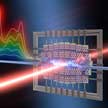 By studying flexible and transparent photodetectors based on single-layer MoS2 under the application of biaxial strain, researchers have developed atomically thin photodetectors whose characteristics can be controlled by means of an externally applied strain. This strain can be reversibly applied through the thermal expansion (shrinkage) of the substrate material, which induces tensile (compressive) biaxial stress. These results emphasize the possibilities of a new kind of electronics - straintronics - in which mechanical deformations are used to modify not only the geometry of the device, but its properties and performance as well.
By studying flexible and transparent photodetectors based on single-layer MoS2 under the application of biaxial strain, researchers have developed atomically thin photodetectors whose characteristics can be controlled by means of an externally applied strain. This strain can be reversibly applied through the thermal expansion (shrinkage) of the substrate material, which induces tensile (compressive) biaxial stress. These results emphasize the possibilities of a new kind of electronics - straintronics - in which mechanical deformations are used to modify not only the geometry of the device, but its properties and performance as well.
Aug 22nd, 2019
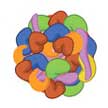 Despite considerable, decade-long efforts in the field of nanomedicine, fewer nanoparticle technologies than expected have made it to clinical trials. Understanding the role of the nano-bio interface - the protein corona - appears to be a critical factor for successful clinical translation of medical nanotechnologies. New research demonstrates that the protein corona controls the interaction of liposomes with immune cells and reveals that the pre-coating of liposomes with an artificial corona made of human plasma proteins significantly decreases capture by circulating leukocytes in whole blood.
Despite considerable, decade-long efforts in the field of nanomedicine, fewer nanoparticle technologies than expected have made it to clinical trials. Understanding the role of the nano-bio interface - the protein corona - appears to be a critical factor for successful clinical translation of medical nanotechnologies. New research demonstrates that the protein corona controls the interaction of liposomes with immune cells and reveals that the pre-coating of liposomes with an artificial corona made of human plasma proteins significantly decreases capture by circulating leukocytes in whole blood.
Aug 21st, 2019
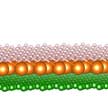 The latest addition in exciting properties of 2D materials has been superconductivity - the complete absence of resistance at low temperatures - clearly exciting for dissipationless (low-power, heating free) electronics. Researchers hypothesized that a layer of hydrogen adatoms could strongly alter the electronic and vibrational features of an atomically thin material, thereby boosting its superconductivity. This idea was tested on a monolayer of magnesium diboride, where hydrogenation was demonstrated to elevate the temperature to where superconductivity appears above a hundred Kelvin - several times higher than in the absence of hydrogen.
The latest addition in exciting properties of 2D materials has been superconductivity - the complete absence of resistance at low temperatures - clearly exciting for dissipationless (low-power, heating free) electronics. Researchers hypothesized that a layer of hydrogen adatoms could strongly alter the electronic and vibrational features of an atomically thin material, thereby boosting its superconductivity. This idea was tested on a monolayer of magnesium diboride, where hydrogenation was demonstrated to elevate the temperature to where superconductivity appears above a hundred Kelvin - several times higher than in the absence of hydrogen.
Aug 20th, 2019
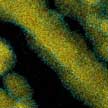 Manganese oxides have numerous applications in batteries, supercapacitors, microelectronics and (electro)catalysis. Researchers describe a cheap and fast method for depositing conformal thin films of manganese oxide on nanostructured substrates with close-to-a-monolayer precision, competing with the state-of-the-art atomic layer deposition (ALD). The team's redox layer deposition (RLD) is performed in air, at room temperature, using common and cheap chemicals and simple glassware - literally two beakers.
Manganese oxides have numerous applications in batteries, supercapacitors, microelectronics and (electro)catalysis. Researchers describe a cheap and fast method for depositing conformal thin films of manganese oxide on nanostructured substrates with close-to-a-monolayer precision, competing with the state-of-the-art atomic layer deposition (ALD). The team's redox layer deposition (RLD) is performed in air, at room temperature, using common and cheap chemicals and simple glassware - literally two beakers.
Aug 13th, 2019
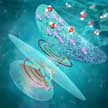 Researchers demonstrate the feasibility of an environmental moisture-induced, self-powered wearable multifunctional sensing system with the ability to detect both humidity and pressure. The self-powered wearable sensing system is fabricated by integrating a flexible micropatterned pressure-sensitive film on PET as the pressure sensor and attached it onto the back of a PDA power generator. Test results prove that this moisture-powered sensor can stably and sensitively realize real-time human physiological signal detection.
Researchers demonstrate the feasibility of an environmental moisture-induced, self-powered wearable multifunctional sensing system with the ability to detect both humidity and pressure. The self-powered wearable sensing system is fabricated by integrating a flexible micropatterned pressure-sensitive film on PET as the pressure sensor and attached it onto the back of a PDA power generator. Test results prove that this moisture-powered sensor can stably and sensitively realize real-time human physiological signal detection.
Aug 12th, 2019
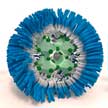 Due to their fascinating optoelectronic properties, halide perovskites have attracted tremendous research interest as promising materials for photovoltaics, photodetectors, LEDs, and lasers. Researchers report report a strategy to synthesize perovskite nanocrystals using diblock copolymer micelles as a growth template. This work constitutes a new approach for synthesizing perovskite nanocrystals of controllable size and composition with vastly improved resistance to halide ion migration and environmentally induced degradation.
Due to their fascinating optoelectronic properties, halide perovskites have attracted tremendous research interest as promising materials for photovoltaics, photodetectors, LEDs, and lasers. Researchers report report a strategy to synthesize perovskite nanocrystals using diblock copolymer micelles as a growth template. This work constitutes a new approach for synthesizing perovskite nanocrystals of controllable size and composition with vastly improved resistance to halide ion migration and environmentally induced degradation.
Aug 7th, 2019
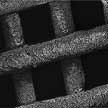 MXenes are a promising class of 2D materials with unique intrinsic physical and chemical properties, including excellent conductivity, hydrophilicity and high density when compared to graphene. 3D-printed architectures composed of MXenes are particularly attractive for energy storage applications such as rechargeable lithium- and sodium-ion batteries, lithium-sulfur batteries and supercapacitors. Researchers now have demonstrated for the first time the possibility to print three-dimensional freestanding MXene objects.
MXenes are a promising class of 2D materials with unique intrinsic physical and chemical properties, including excellent conductivity, hydrophilicity and high density when compared to graphene. 3D-printed architectures composed of MXenes are particularly attractive for energy storage applications such as rechargeable lithium- and sodium-ion batteries, lithium-sulfur batteries and supercapacitors. Researchers now have demonstrated for the first time the possibility to print three-dimensional freestanding MXene objects.
Aug 6th, 2019
 The precise mechanisms underlying friction at the nanoscale are still not completely understood. While gears, bearings, and liquid lubricants can reduce friction in the macroscopic world, the origins of micro-and nanoscale friction for small devices require other solutions. This primer explains the concept of friction, in nature and man-made systems, especially at the nanoscale. It then discusses a new class of 'smart' materials with the ability to modulate the friction of a surface.
The precise mechanisms underlying friction at the nanoscale are still not completely understood. While gears, bearings, and liquid lubricants can reduce friction in the macroscopic world, the origins of micro-and nanoscale friction for small devices require other solutions. This primer explains the concept of friction, in nature and man-made systems, especially at the nanoscale. It then discusses a new class of 'smart' materials with the ability to modulate the friction of a surface.
 Subscribe to our Nanotechnology Spotlight feed
Subscribe to our Nanotechnology Spotlight feed





